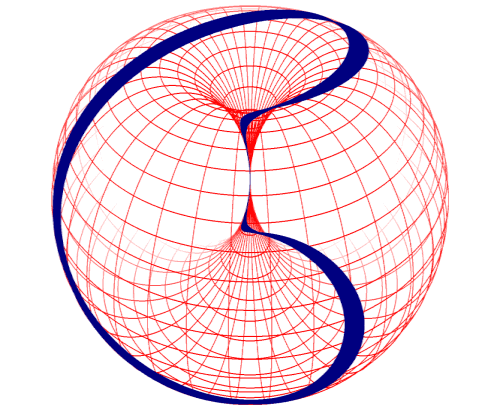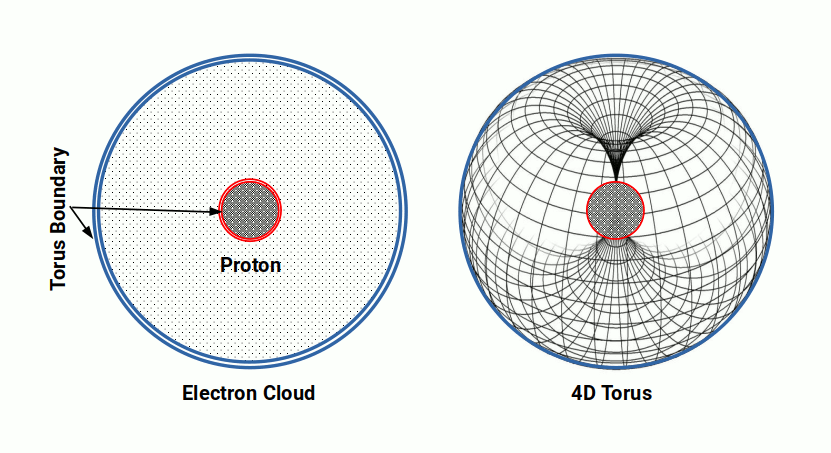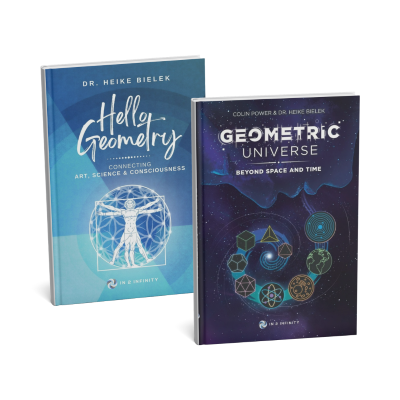Geo-Nuclear physics is the application of simple polyhedra to the structure of the atomic nucleus. It unravels the conundrum of the discrepancy between the measured and predicted sizes of the atoms on the periodic table. It is a complimentary study to Geo-Quantum Mechanics and Atomic Geometry, as the field of Geo-atomics offers an integrated perspective, from the dot at the centre, to the boundary of the electron cloud.
Overview
Within the intricate realm of quantum mechanics lies the fascinating field of geo quantum mechanics, a branch of study that explores the geometric structure of atomic nuclei. The nucleus, composed of protons and neutrons, serves as the epicentre of an atom, with each element on the periodic table showcasing its own unique arrangement.
On this page, we provide an overview geoquantum mechanics, unravelling the significance of nucleonic composition and shedding light on the perplexing nature of atoms.
The Balance of Protons and Electrons
At the heart of every atom lies the delicate balance between protons and electrons. The atomic number, determined by the number of protons, dictates an element’s distinct characteristics. In a stable atom, the number of protons matches the number of electrons, resulting in overall electrical neutrality. Remarkably, this equilibrium extends to the entire universe, as the count of protons and neutrons remains constant.
The notion of atoms being part of a universal tapestry, connected to the background Aether of space, allows for a broader understanding rather than treating them as isolated objects. This concept is also linked to the Cosmic Microwave Background.
When there is a shift in the balance between electrons and protons, the concept of electricity emerges. If there is an imbalance of electrons in a material, it becomes charged. The energy is discharged and returns to equilibrium, causing an electric flow through the circuit. Electrons can move between atoms composed of fixed protons in the atomic lattice, demonstrating their mobility within different atomic structures.
Whilst this is a relatively simple model that presents the electron and proton as tiny particles, the Geoquantum perspective suggests they are a unified high dimensional Euclidean object. The simplest example of this is the torus field.
A Torus field, a fourth-dimensional object that holds significant implications for atomic structure and energy flow. At its core, a torus field can be envisioned as a multidimensional construct that exhibits distinct North and South Poles. This dynamic field allows energy to flow and expand, encircling a central core before seamlessly folding back into its South Pole. Remarkably, this description aligns remarkably well with the behaviour of electricity as depicted in Maxwell’s equations.
The theory of Inverse Geometry sheds further light on the relationship between the torus field and atomic structure. According to this viewpoint, the dot at the centre of the atom, representing the atomic nucleus, expands through higher-dimensional space to form a shell of electrons around its periphery. This conceptualization bridges the gap, uniting the nucleus of the atom directly with the surrounding field
The Electron Cloud: A Result of Quark Spin
One may wonder what gives rise to the electron cloud enveloping the atomic nucleus. The answer lies in the spin of the quarks within the nucleus. This phenomenon increases the density of energy within the confines of the atomic centre, manifesting as the electron cloud. By acknowledging this, we begin to unravel the intricate relationship between atomic particles and their corresponding energy interactions.
4D Matter
The torus field concept presents us with an opportunity to perceive atomic structure in a novel and holistic manner. This unified perspective enables us to see the nucleus as an integral part of the surrounding energy field. By embracing the intricate interplay between the torus field and atomic particles, we inch closer to refining our comprehension of the fundamental building blocks of matter.
Unravelling the Neutron's Mysteries
While protons maintain consistency in number, the neutron provides a realm of variability within atomic nuclei. Isotopes are an assortment of a single element with different numbers of neutrons. The progression of elements on the periodic table correlates with an increase in the number of neutrons, essential for maintaining the stability of the respective atom. However, the underlying reasons for this phenomenon have remained largely unrecognized.
While the role of neutrons is often overlooked in experimental examinations, delving into this notion of different isotopes and their distribution throughout an atomic lattice brings about the captivating field of isotope distribution.
Isotope distribution, in simple terms, refers to the varying abundance of isotopes within the atoms of a specific element. Isotopes are atoms of the same element that possess different numbers of neutrons in their nuclei. This distinction, although seemingly minor, has profound implications on the characteristics and properties exhibited by these elements.
By comparing and analysing the results, valuable insights can be gained regarding the fundamental nature of matter and its behaviour. One such example lies in observing the isotope distribution of nickel, copper, and zinc, which exhibit striking similarities.
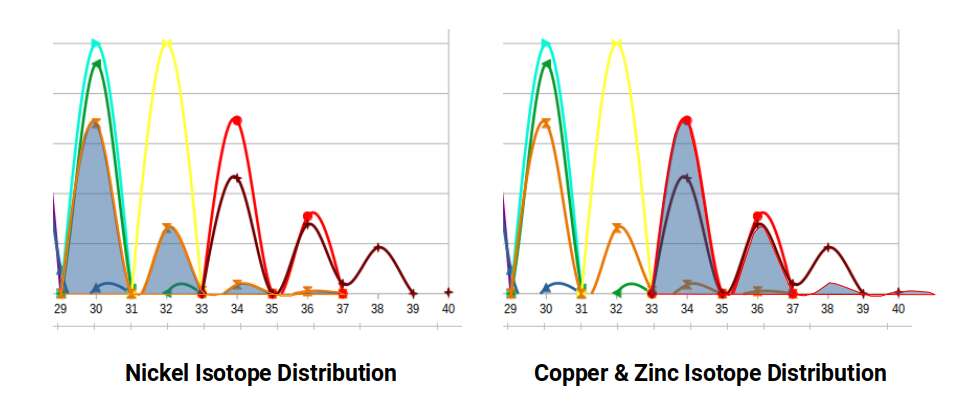
By examining the isotope distribution of nickel, copper, and zinc, we can gain valuable knowledge about the electrical conductivity and magnetism exhibited by these elements. This has implications for various industries and applications, ranging from electronic devices to energy production.
Understanding the isotope distribution of elements opens up opportunities for further scientific exploration and technological advancements. It allows us to comprehend the intricate nature of atoms and their behaviour in different contexts. Moreover, this knowledge can be leveraged to design more efficient materials and devices that harness the unique properties exhibited by specific isotopes.
Geo Nuclear Physics: A 4D Perspective
Enter geo nuclear physics, a groundbreaking study that investigates the geometric configuration of atomic nuclei. When observed from a fourth or higher dimensional perspective, geo nuclear physics unifies the quantum spin of quarks, the building blocks of protons and neutrons, with the electron’s spin within the electron cloud. This innovative approach magnifies the interplay between these fundamental particles, presenting a unified representation that has eluded prior atomic models.

In geo nuclear physics, the total nucleon count of atoms can be determined by counting the number of protons and neutrons. These counts can then be organized into a geometric form to explain the specific properties of different atom types.
A Coherent Journey
Central to the significance of geo nuclear physics is its ability to present a single coherent model that encompasses the interactions among neutrons, protons, and electrons within an atom. This multidimensional framework sheds new light on the enigmatic nature of atomic compositions, paving the way for a deeper understanding and potential breakthroughs in various scientific disciplines.
THE
Conclusion
Geo quantum mechanics offers a fresh perspective on the study of atomic nuclei, providing a comprehensive model that deciphers the intricate geometric structure and interactions within atoms. Through this multidimensional lens, the mysteries surrounding the varying numbers of neutrons in isotopes and the delicate equilibrium between protons and electrons begin to unravel. As this field continues to evolve, we anticipate further enlightening discoveries that will redefine our understanding of the fundamental building blocks of our universe.
Carry on Learning
This post form part of our new theory of ATOMIC GEOMETRY. Find out more by browsing the post below.


D-Orbital Geometry – Part 2
The 2nd set of D-orbitals contain various anomalies that are explained by the Geometric model of the atom. Part 2 of 3.
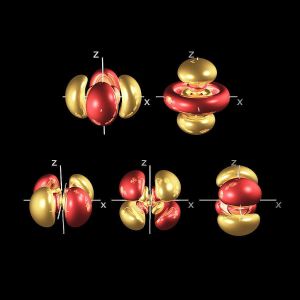
D-orbital Geometry – Part 1
D-orbitals form cross shapes lobes that unify on the x, y, and z axis to produce a hypercubic model of the electron cloud

D-Orbital Geometry – Part 3
The 3rd set of D-orbitals are the last to form stable elements. The geometric explanation revels a 6D structure which terminates at the end of the Metatron’s Cube.


